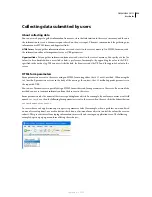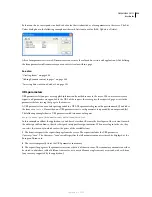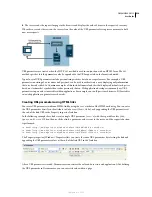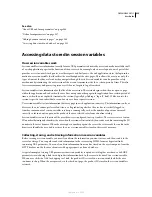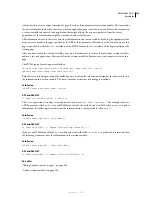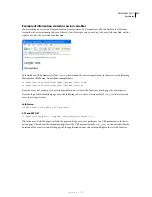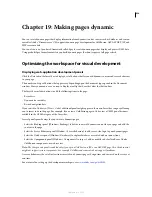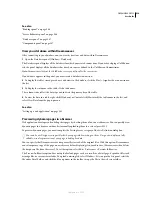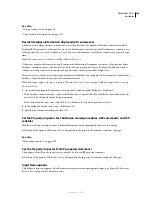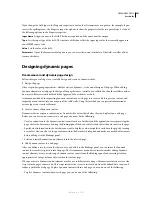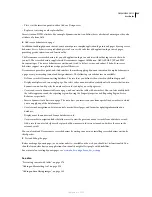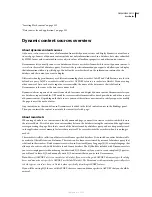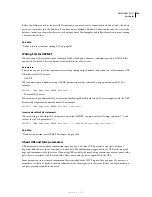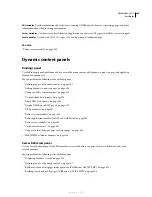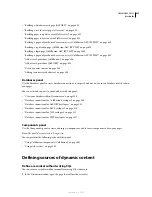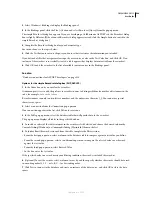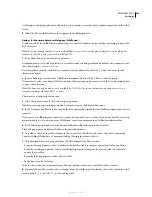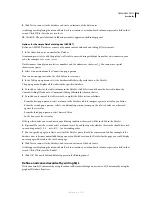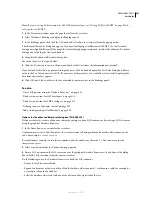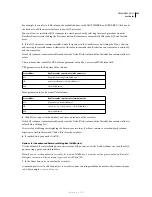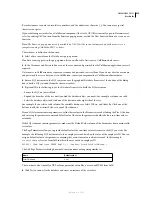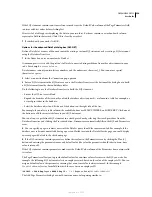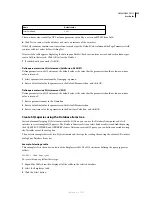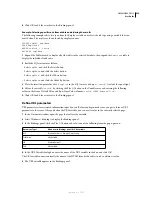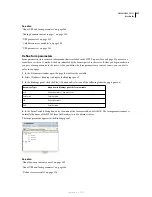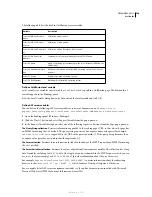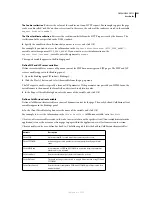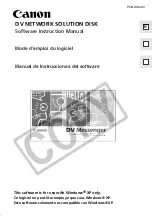
DREAMWEAVER CS3
User Guide
546
CGI variables
Provide information about the server running ColdFusion, the browser requesting a page, and other
information about the processing environment.
Server variables
Can be accessed by all clients and applications on the server. They persist until the server is stopped.
Local variables
Created with the
CFSET
tag or
CFPARAM
tag within a ColdFusion page.
See also
“Define server variables” on page 559
Dynamic content panels
Bindings panel
Use the Bindings panel to define and edit sources of dynamic content, add dynamic content to a page, and apply data
formats to dynamic text.
You can perform the following tasks with this panel:
•
“Defining sources of dynamic content” on page 547
•
“Adding dynamic content to pages” on page 564
•
“Change or delete content sources” on page 563
•
“Use predefined data formats” on page 578
•
“Attach XML data sources” on page 430
•
“Display XML data in XSLT pages” on page 431
•
“URL parameters” on page 533
•
“Define session variables” on page 558
•
“Define application variables for ASP and ColdFusion” on page 558
•
“Define server variables” on page 559
•
“Cache content sources” on page 563
•
“Copy a recordset from one page to another page” on page 563
•
“Make HTML attributes dynamic” on page 566
Server Behaviors panel
Use the Server Behavior panel to add Dreamweaver server behaviors to a page, edit server behaviors, and create
server behaviors.
You can perform the following tasks with this panel:
•
“Displaying database records” on page 570
•
“Defining sources of dynamic content” on page 547
•
“Build master and detail pages in one operation (ColdFusion, ASP, JSP, PHP)” on page 622
•
“Building search and results pages (ColdFusion, ASP, JSP, PHP)” on page 624
September 4, 2007

